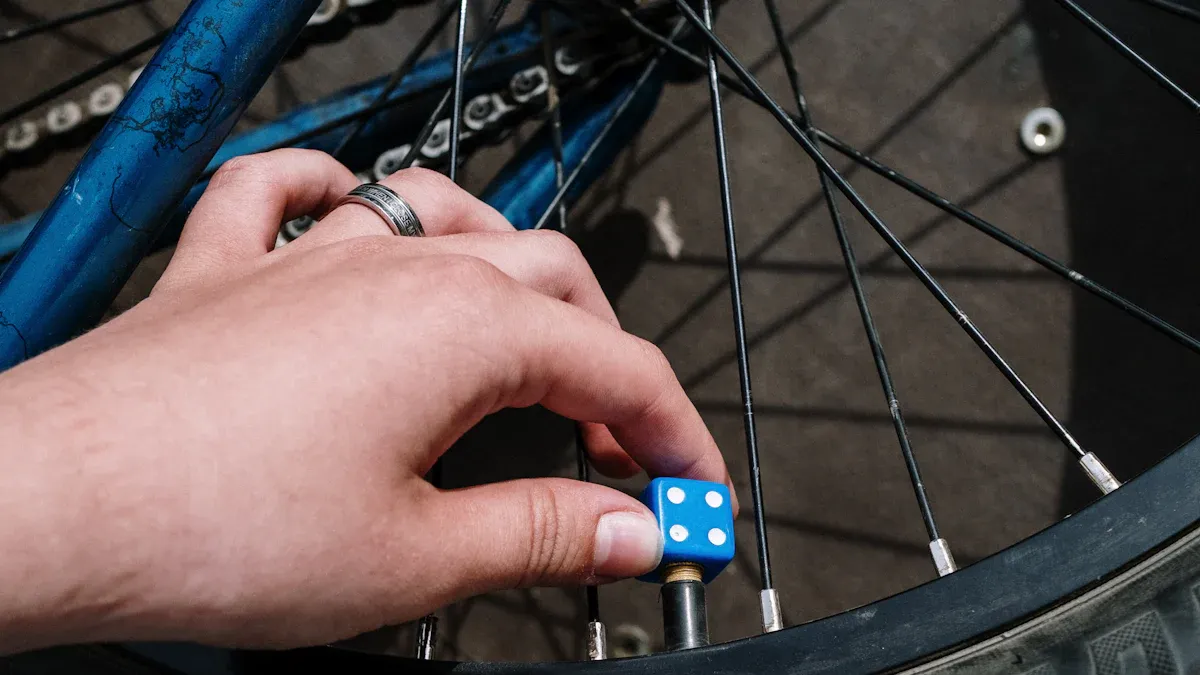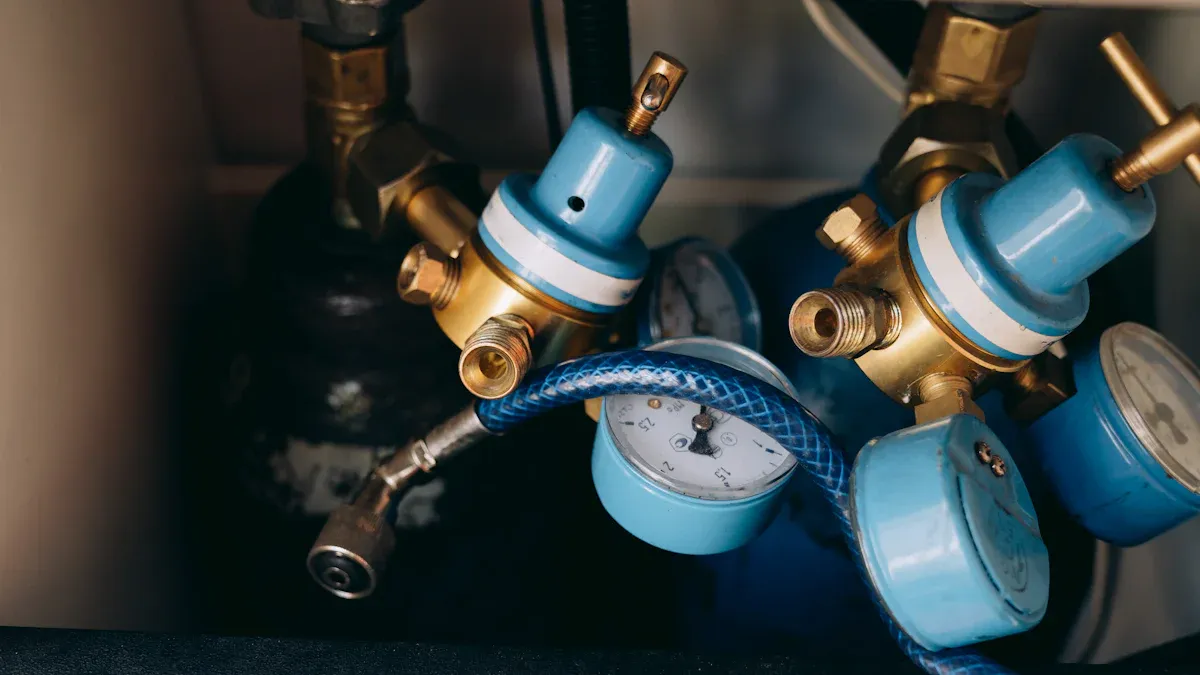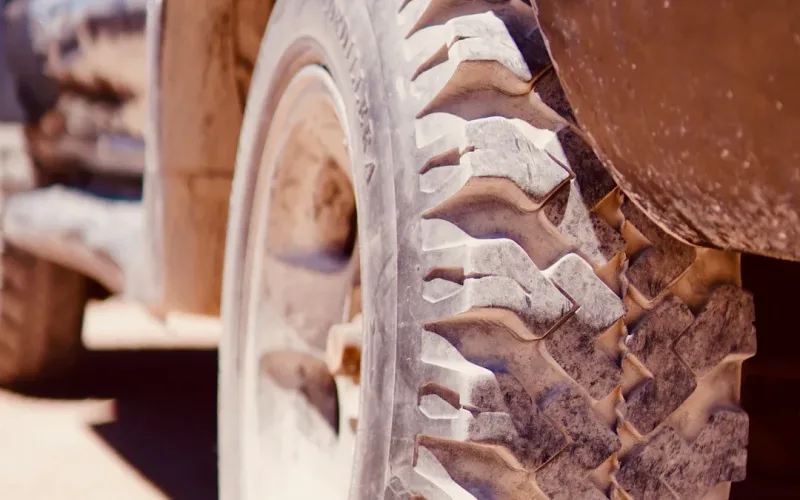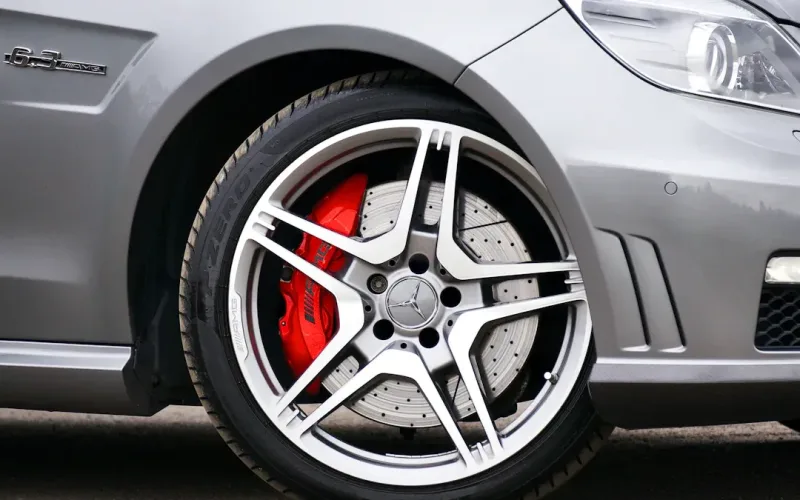

admin1
August 4, 2025
Understanding the function and uses of the Schrader valve core

You rely on the Schrader valve core every time you inflate your tire, whether on a car or your bike. This small, spring-loaded device sits inside the valve stem, allowing air to flow in or out as needed. When you finish adding air to your bike tire, the valve core closes tightly to keep pressure inside. Industry studies show that the Schrader valve can sometimes leak, especially during servicing, but using a proper gasketed cap can stop air or refrigerant loss. The Schrader valve’s two seals work together to prevent leaks, making it a key part of every bike and tire you use.
- Many bike and tire systems use Schrader valves because they are reliable.
- You can find Schrader valves in almost every bike tire, car tire, and even in air conditioning systems.
- Proper valve maintenance helps your bike tires stay inflated and safe.
Schrader Valve Core: Definition and Key Features

What Is a Schrader Valve Core?
You see the Schrader valve core every time you fill up your bike or car tire. This small part sits inside the valve stem and controls how air moves in and out. When you press an air pump onto the valve, the core opens and lets air flow into the tire. When you remove the pump, the core closes tightly to keep the air inside. You find the Schrader valve core in many places, including bike tires, car tires, and even air conditioning systems.
The Schrader valve core works as a spring-actuated, cartridge-type check valve. You screw it into the threaded housing of the valve stem. The core uses a spring and a sealing washer to create a tight seal. This design helps prevent leaks and keeps your tire pressure steady. You can trust the Schrader valve core to work well, even when you use it in high-pressure situations like hydraulic systems or air-charged units. Manufacturers test these valve cores for strength and reliability. They use stainless-steel bodies and soft elastomeric washers to make sure the core lasts a long time and works safely under pressure.
Tip: Always check your bike tire valves for leaks after inflating. A good Schrader valve core will keep your tires firm and safe for riding.
Main Components of a Tire Valve Core
You might wonder what makes up a tire valve core. Each part has a special job to do. Here are the main components you will find in a Schrader valve core:
- Body: The main structure, often made from brass or stainless steel, gives the valve its strength. Stainless-steel bodies help the valve handle high pressure and last longer.
- Spring: This small metal spring pushes the core closed when you are not adding air. It helps keep the tire sealed.
- Sealing Washer: Usually made from a soft material like rubber or another elastomer, this washer creates a tight seal. It stops air from leaking out of the tire.
- Actuation Shaft: This thin rod sticks out from the core. When you press down with a pump or gauge, the shaft moves and opens the valve.
- External Static Seal: This seal sits between the valve core and the valve stem. It prevents leaks where the core meets the stem.
You find these parts working together every time you inflate your bike tire. The design of the Schrader valve core makes it strong and reliable. Manufacturers test each valve core for leaks and pressure. Some valve cores can handle up to 4,000 psi, which means they work well in both regular bike tires and high-pressure systems. You can count on the Schrader valve core to keep your tires inflated and ready for the road.
| Component | Function | Material |
|---|---|---|
| Body | Provides structure and strength | Brass/Stainless Steel |
| Spring | Closes the valve when not in use | Metal |
| Sealing Washer | Creates an airtight seal | Rubber/Elastomer |
| Actuation Shaft | Opens the valve when pressed | Metal |
| External Static Seal | Prevents leaks at the core-stem interface | Rubber/Elastomer |
You use the Schrader valve core in many bike and tire systems because it is easy to use and very dependable. The careful design and strong materials help the valve last a long time, even if you ride your bike every day or drive your car on rough roads.
How the Schrader Valve Core Works
Internal Mechanism and Airflow Control
When you look at a bike or car tire, you see a small metal stem sticking out. Inside that stem sits the Schrader valve core, which acts like a tiny gatekeeper for air. The core uses a poppet, or mushroom-shaped plug, attached to a valve pin. A helical spring wraps around the pin and pushes the plug tightly against the valve seat. This setup blocks air from escaping when you are not inflating your tire.
Here is how the airflow control works step by step:
- The Schrader valve core sits inside the hollow valve stem of your bike or car tire.
- The mushroom-shaped plug connects to a valve pin, which lines up inside the tube.
- The spring pushes the plug outward, sealing the valve and stopping air from leaking out.
- When you press down on the valve pin with a pump or tool, the plug moves away from the seat. This action opens the valve and lets air flow in or out.
- Air always moves from high pressure to low pressure. During inflation, air flows into the tire. When you check tire pressure or let air out, it flows the other way.
- Once you stop pressing the pin, the spring pushes the plug back into place. The valve closes and air stays inside.
- The compressed air inside the tire also helps keep the valve closed, adding extra security.
- A valve cap covers the stem, protecting the sealing surfaces from dirt and dust.
Tip: Always replace the valve cap after inflating your bike tire. This simple step keeps dirt out and helps your valve last longer.
The Schrader design makes it easy for you to inflate your bike or car tire. You only need to press the pump nozzle onto the valve. The spring-loaded core opens automatically, so you do not have to do anything extra. This system works well in all kinds of weather, even when it is wet or cold.
Sealing and Pressure Maintenance
You want your bike or car tire to stay inflated for as long as possible. The Schrader valve core helps you do this by sealing tightly and maintaining tire pressure. The spring inside the core keeps the valve closed when you are not adding air. This spring force, combined with the pressure inside the tire, creates a strong seal.
Schrader valves work in many different systems. In cars, the typical opening pressure is about 90 psi. Most automotive valves can handle up to 250 psi. Some industrial Schrader valves, especially those made from stainless steel, can handle pressures as high as 5,000 psi. This strength means you can trust the valve to keep your tire pressure steady, even in tough conditions.
- Schrader valves are common in automotive fuel systems, air conditioning, and other fluid control systems.
- The valve acts as a check valve, stopping air from escaping up to its rated pressure.
- The spring force is small, but the design makes sure the valve stays closed until you press it open.
Over time, used Schrader valve cores can become a source of leaks, especially in systems like air conditioning. Studies show that many used valves leak, which can lead to loss of refrigerant or air. You can check for leaks by using soapy water on the valve and looking for bubbles. Using a gasketed cap helps reduce leaks, even if the valve stem is not perfect. Regular maintenance, like checking and replacing old valve cores, keeps your bike and car tires safe and properly inflated.
Note: Always use the right type of Schrader valve core for your system. Tighten the core with a torque tool to the correct setting. This prevents leaks caused by over- or under-tightening.
The Schrader valve core gives you a reliable way to control airflow and maintain tire pressure. With proper care, you can keep your bike and car tires ready for any road or trail.
Schrader Valve Core Applications

Automotive Tires and Vehicles
You see the Schrader valve core in almost every car, truck, and motorcycle tire around the world. This valve type dominates the automotive market because it offers a strong, reliable seal that keeps your tire pressure steady. When you inflate your tires, the spring-loaded core lets air in and then seals tightly to prevent leaks. Automotive industry reports show that this airtight seal is vital for safe driving. The valve core also works with tire pressure monitoring systems (TPMS), which alert you if your tire pressure drops. These systems help you avoid accidents and improve fuel efficiency. You should always check your valve stems and replace worn cores to keep your tires safe. Experts recommend using nickel-plated valve cores in aluminum TPMS stems to prevent corrosion and sensor failure.
Bicycles and Other Inflatables
You find Schrader valves on many bike tire valves, especially on mountain bikes, hybrids, and kids’ bikes. The robust design makes them less likely to get damaged, even if you ride on rough trails. You can inflate these bike tire valves with almost any pump, including those at gas stations. This universal compatibility makes them easy to use. The table below shows why many people choose Schrader valves for bike tire valves and other inflatables:
| Advantages of Schrader Valves | Explanation |
|---|---|
| Robust and Durable Design | The wide, sturdy build resists damage and lasts longer. |
| Ease of Inflation | You can use many types of pumps for quick inflation. |
| Universal Compatibility | Standard size fits most pumps and tools. |
You may notice that some high-performance road bikes use Presta valves, but most everyday bikes rely on Schrader valves for their ease and reliability. Modern designs even make tubeless setups easier and help prevent the tire bead from catching. You can trust these bike tire valves to keep your bike ready for any ride.
Air Conditioning and Refrigeration Systems
You also find the Schrader valve core in air conditioning and refrigeration systems. In these systems, the valve acts as a check valve, controlling the flow of refrigerant. When you press the actuation shaft, the valve opens to let refrigerant in or out. When you release it, the spring closes the valve to seal the system. Manufacturers use special seals and materials to match different refrigerants and oils. Industry standards require these valves to fit universal caps and tools, making servicing easier. You should always test valve cores for compatibility and safety in your system. Using the right valve core helps your air conditioning or refrigeration system run smoothly and prevents leaks.
Maintenance and Troubleshooting for Schrader Valve Cores
Checking for Leaks and Common Issues
You want your bike tires and car tires to stay inflated and safe. Regular checks help you spot problems early. Leaks in a schrader valve often come from age, weather, or daily use. You might notice air escaping when you remove the valve cap or see bubbles if you apply soapy water to the valve. Cracked valve caps, corrosion on the valve core threads, and loose or leaking valve cores are common issues. Problems can also come from cracked rubber grommets or corrosion around the valve stem. If your bike uses a Tire Pressure Monitoring Sensor (TPMS), damage or corrosion can cause leaks there too.
- Leaks often result from:
- Age and weather exposure
- Cracked or missing valve caps
- Corrosion on valve core threads
- Loose or leaking valve cores
- Cracked rubber grommets
- Issues with TPMS sensors
You can fix many of these problems by tightening or replacing the valve core and always using a good valve cap to keep dirt out.
Replacing a Schrader Valve Core
If you find a leak, you may need to replace the valve core. Start by gathering your tools and wearing safety gloves. Find the valve stem on your tire or bike. Remove the valve cap and let all the air out by pressing the valve. Use a valve core removal tool and turn it counterclockwise to take out the old core. Check the old core for damage or corrosion. Insert a new core and screw it in clockwise until snug, but do not overtighten. Inflate the tire to the recommended tire pressure. Check for leaks with soapy water. Put the valve cap back on and check the tire pressure with a gauge.
Tip: Keep spare valve cores and check your tire valve core condition often to avoid sudden air loss.
Tools and Tips for Tire Valve Core Care
You can make maintenance easier with the right tools. Many brands offer 2-in-1 or 4-in-1 schrader valve tools that help you remove, install, deflate, and repair valve cores. These tools save time and reduce the need for extra equipment. For aircraft or high-pressure tires, special tools trap the valve core and control air release, making the process safer. Always use the correct tool to avoid damaging the valve.
To extend the life of your bike and car valve cores:
- Use the right tools for installation and removal.
- Inspect valve cores for wear, corrosion, or dirt.
- Clean and lubricate moving parts to prevent leaks.
- Choose valve cores made from corrosion-resistant materials for harsh conditions.
- Detect and fix leaks early to keep tire pressure steady.
Note: Regular care and the right tools help your bike and car tires stay ready for every ride or drive.
You depend on the schrader valve core every time you check your bike or car tire. This small valve keeps air inside, controls inflation, and helps your bike ride smoothly. Regular valve maintenance, like checking for leaks and replacing worn parts, keeps your tire safe and improves performance. The global market for schrader valve cores grows as more people use bikes and cars. New valve designs make inflation easier and help your bike last longer. Fortune delivers high-quality valve solutions, so you can trust your bike and tire every day.
- Inspect your bike valve often.
- Replace faulty valve cores for better tire safety.
- Choose trusted brands for reliable bike valve performance.
FAQ
What is the main purpose of a Schrader valve on a bike?
You use a Schrader valve to control air flow in your bike tire. This valve lets you add or release air easily. It keeps your bike tire pressure steady and helps you ride safely.
How do you check if your bike valve is leaking?
You can check your bike valve by applying soapy water to the valve area. If you see bubbles, your valve leaks. Always check your bike tires after rides to keep them safe.
Can you use any pump with a Schrader valve on your bike?
You can use most air pumps at home or at gas stations with a Schrader valve. This valve fits many pump types. You do not need special tools for your bike tires.
How often should you replace the valve core on your bike?
You should check your bike valve core every few months. Replace it if you see leaks, rust, or damage. A good valve core keeps your bike tire pressure strong.
Why do most bikes use Schrader valves?
Most bikes use Schrader valves because they are strong and easy to use. You can inflate your bike tires quickly. This valve design works well for daily rides and rough trails.





